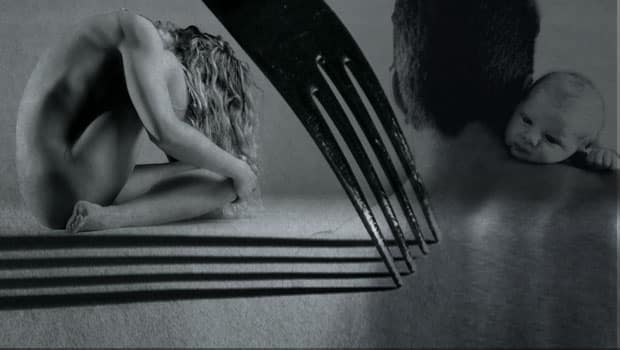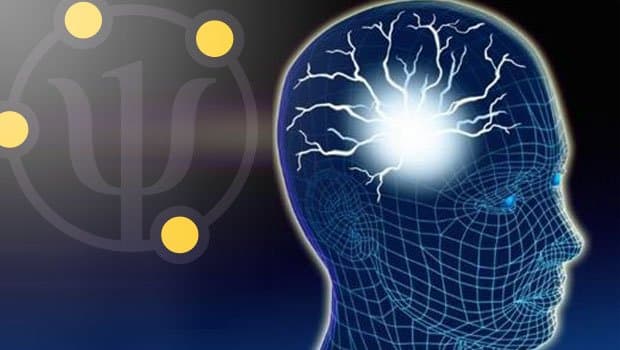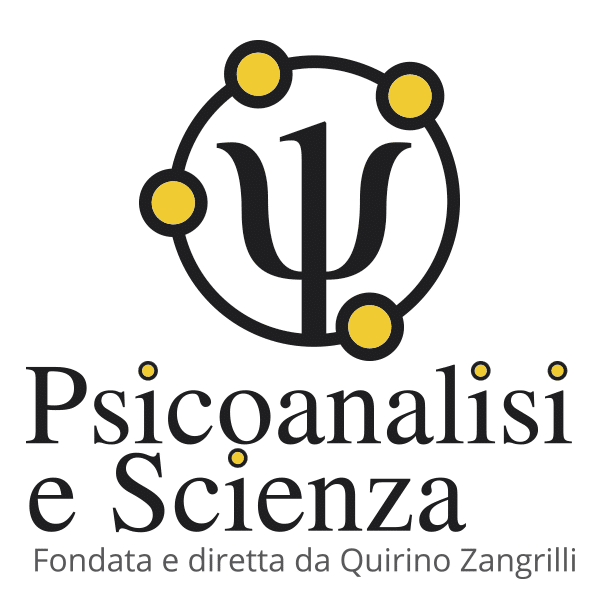Sommario
(Abstract taken from the report presented at the Congress “The Weight of Emotions: Functional Food and Non-functional food” held at Castro dei Volsci 17th October 2013)
Introduction
With my contributions to the previous workshops I had tried to focus on which are the psychodynamic mechanisms that are at the base of the human feeding behaviour, the genesis of the psychosomatic feeding function and the processes of maturation of the above mentioned.
Today I believe that it is useful to illustrate two clinical cases to show how the psychodynamic hypotheses allow us a psychotherapeutic efficacy that can often lead to a resolution or, at least, to a drastic redimensioning of the pathology.
The Psychodynamic Hypotheses
Before doing so I would like to recall, generally speaking, the theoretical hypotheses to which I refer through brief concepts.
Above all, I would like to underline that those like myself who practise intensive Freudian psychoanalysis, tend to set the problem in a longitudinal prospective. Thanks to the studies by Nicola Peluffo today we know that the human psychism has determinants that condition it since the fetal stage and that the intrauterine vicissitude leaves traces and conditioning which will have a great importance in the psychobiological destiny of the human being.
Not only, we attribute a great importance to what we call the “psychic ground” defined as the set of the constitutional, hereditary or acquired factors that intervene in the manifestation or the evolution of a symptomatic state.
At a deeper level the psychobiological ground can be defined as the quality of the psychobiological relation that an individual has with his Id, the urging source of the human being.
For the present issue we can say that the clinical experience often shows us, if we conduct a longitudinal study, or as it is nowadays trendy to say, transgenerational, the construction for more generations of the pathological stigma which later explodes in the generation being clinically observed.
Therefore we will pay most attention to the reconstruction of the feeding behaviour of the ancestors.
Food and Incestuous Pressures: The First Case.
Let’s take a look at a subject affected by binge eating disorder: “from yesterday I feel as though I’m eating only for myself and not for them. Before, I was all one thing with them, a very strong bond. Eating we are always united: we’ll never leave each other.I have sudden images of when we are all at the table, I must eat like them: all united. A thing from which you cannot escape. All bound, forever, for life. I eat for all those who have preceded me: I keep them alive.
I no longer want to eat that way! I eat for myself and for those who are inside me! My mother never gave me affection, only food. Food is not love: this way it only hurts you.I believed up till yesterday that the more I ate the happier I was. Only now I realise that I’m risking death”.
The patient is a young man that, as well as a feeding disorder, presents a very strong inhibition towards love. He does not have a regular partner and, before beginning his psychoanalysis, he had the slightest sexual life. In late adolescence he had managed to build a relationship with a woman who was notably androgynous and with whom he had sexual intercourse prevalently from behind which, on one hand evidently satisfied his latent homosexual pressures, and on the other hand avoiding the sight of the vagina, psychically perceived as an amputated organ, mitigated an extremely intense anguish of castration.
He describes his feeding problems in this way: “I couldn’t have my mother so I have my mother only through food. I have nobody to love, I don’t have a woman, I’m not in love: I am still blocked on this image of my mother and so as to have her always inside me I bolt down my food without stopping”.
It should be said that the young man’s mother left him during the full Oedipus explosion to work as a wet nurse in another city. She gave her desired breast to another child: an indelible oral betrayal and at the same time the fulcrum of a fixation nucleus almost unresolvable.
In reality, that parting determined such a powerful anguish of annihilation that this man could not leave the maternal nest for long without experimenting a death anguish caused by a strong feeding deprivation.
From this point of view, we must bear in mind that every time an oral traumatic nucleus is reactivated, the relationship with the object becomes a relationship of survival and the removal of that object places the person in a state of anguish of death due to the lack of nutrition. The mother is unique, she is the source of nourishment and her disappearance is like a solar eclipse. There is no other explanation for the anguish that often feeds the suicidal behaviour of many teenagers who establish totally symbiotic relationships (oral) with the object and they literally feel like dying and hopeless when they are abandoned by their loved one.
The patient came to psychoanalysis after a sexual abstinence that had lasted for 14 years. Apparently a gentle man, in reality he had a sadistic structure of personality, at times camouflaged by a flaunted passivity of the compulsory type, whose real unconscious aim was to profane, hurt, harm women (the mother). Since his childhood he had simmered an inextinguishable hatred and at the same time a morbid attraction towards his mother. A very profound ambivalence that pushed him towards abstinence. The frustrated enormous libido pressure ebbed to the nuclei of oral fixation and the compulsory masturbation (often having his mother as the fantasy object) and irrepressible binging would alternate systematically.
He was blocked at a kind of cannibalistic desire: devouring his mother to become one with her, destroying to assimilate her, in a kind of primary oral coitus. During his psychoanalytic work the young man remembered a series of episodes of infantile seduction in which his mother let herself go to ‘casual’ rubbing against him or episodes of genital exhibition often when she was on the toilet. Intense insights of primary scenes in which the child had assisted at a relatively advanced age (4-5 years) were not lacking.
This continuous excitation followed by inevitable frustration had caused an accumulation of hatred which the child had channelled into an oral sadistic activity: “I understand why I have never had a woman: because I didn’t love my mother, so I couldn’t love a wife. I hated my mother. I don’t know how I haven’t become a cannibal. I would have liked to feed off her like a holy communion. My mother made me understand that she loved me only by stuffing me with food! When she returned after a month’s absence she would make me fried doughnuts. This was my love relationship with my mother: even today living with my parents, I have to eat to calm myself”, the patient would lucidly affirm finally.
Food and Incestuous Pressures: The Second Case.
We can now pass to the opposite pole: the anorexic syndrome, which in other occasions I have defined as a kind of delusion embedded in the body.
In this case the phantasies and the infantile imagoes, instead of following the direction of the psychic elaboration (mentalization, oneiric elaboration), elect the body as the site of the conflict: it becomes the privileged object both of the aggressive attacks and of the narcissistic investments.
The Phantasm of The Fusional Mother
Furthermore, the activation through hyper-investment of a privileged Imago is created in these people’s minds: the image of the fusional mother, an omnipotent and persecutory imago which provokes a powerful desire of fusion that at the same time activates a profound anguish of dissolving oneself in the Other and of a reabsorbing-annihilation. It is an omnipotent experience of the unweaned baby thanks to which the baby does not perceive the object (the mother) separate from the Self, but it perceives itself as a whole with the mother in a kind of symbiotic structure: the distinction between itself and the Other is very feeble and the child lives the mother as an extension of itself, as if she were a limb or an organ.
Anorexia
The case of two sisters who were both anorexic, comes to my mind: a case in which the full-blown explosion of the disease happened at a relatively late age: around twenty-five.
First the conflict had manifested itself in both of them in the establishment of an extremely conflictual sexual-affective life in which highly self-destructive masochistic rapports would alternate with behaviours of marked sexual promiscuity, with the practise of a superficial, occasional sexuality, often performed with different partners.
For both, the anorexic solution had arrived as the way of expiation of a sexual conduct that was lived as sinful and dissolute. The two sisters who were very close in age, had been grown by a mother that hated men ferociously; she had been abandoned by her father practically at birth and had been forged with the hatred that her respective mother had harboured for the fugitive spouse for all her life.
Her mother had married a wealthy man who she formally respected from a social point a view, but who was afflicted by a serious obsessive-compulsive neurosis in which the taboo on touch literally impeded the carnal contact. A wonderful encounter of pathologies!
I believe that sexual intercourse performed with infinite precautions finalised in containing to the minimum the cutaneous contact between the two bodies has been a kind of artificial insemination ante litteram realised with human methods. Then nothing else. She continued to live her mother’s hell: a consuming desire for an idealised man made impossible by the destructive hate. The two girls grew in an atmosphere of ferocious competition which was fuelled by the mother’s unconscious position whom operating a splitting of the object had deposited all her hatred onto the firstborn, guilty of resembling her father and had invested all her narcissism in her second child who was overvalued and absurdly spoilt.
The father of the two girls died during their adolescence: the oldest child began e process of total identification with the defunct, taking his place at work, his masculine aspect and his hobbies. This is how she reconstructs her father’s death in the session: “Six or seven months before my father died we were actually engaged. We were on holiday together. Then in the evening he felt ill and he poohed himself. I attempted to clean him. He said to me: – Now I am truly assured because I see that you are mature -. What a crushing responsibility! He said to me: – There, at least now your mother has you! – It was like an ordination… My God, it is too much! This thing frightened me, my heart pounded wildly. With the passing of time the words become stones”. Beside this clinical material I limited myself to writing a curt note: “In that moment her father betrothed himself to her”.
The second daughter spent all her youth in a destructive relationship with a heroin addict, a kind of unconscious immolation in a dark well. Then for both of the sisters the destructive relationships were not enough and the anorexic expiation began. The rapport with food had eroticised: eating meant unconsciously mating with the incestuous object; for this reason it was necessary to reduce the food or at least ritualise it into complicated sacrificial formulas. Furthermore, the substantial destruction of their bodies and their beauty that they had undertaken also had the aim of making them less sexually desirable, finding in this way relief and shelter from the sexual requests that came from their Id.
Therapeutic Results
In all the cases treated the reconstruction during the sessions of the highly conflictual nuclei related to the oral stage and the expulsion of the cannibalistic aggressiveness leads to a progressive dissolution of the food symptomatology: a defence which is by now uselessly anachronistic.
After 14 years of total abstinence the young man restarted his sexual life, firstly with prostitutes (If I pay you, you can’t be my mother!) then with non mercenary women. The oldest sister was capable of sundering a sadomasochistic marriage and marrying an affectionate and normal neurotic man but with an undeniable stigma: a severe physical handicap. Fundamentally, the necessity of a strong diminishing of the male image could not be abandoned.
The younger sister, cured of the anorexic syndrome, however, renounced substantially to her sexual life developing several forms of sublimation. The focal psychoanalyses which they had undertaken had saved them from the anorexia but a much greater treatment would have been necessary to dissolve a genealogical nucleus of such importance.
Translated by Linda De Nardo
Nel 2024 riceve il Premio Accademico d’Onore della Accademia Culturale Internazionale Cartagine 2.0.
Nel 2024 docente ad Almaty – Kazakhstan presso il workshop di psicoanalisi sul tema della violenza, promosso dall’Università di psicoanalisi di Mosca in collaborazione con l’Istituto svizzero di micropsicoanalisi.
Doctor Quirino Zangrilli was born in Fiuggi in 1955. Graduated with honours in Medicine and Surgery in 1980, he practices Psychoanalysis, with intensive method, since 1982. He is author of 72 scientific pubblications. He has attended as speaker or president of session to many national and international scientific Conventions. His book “La vita:involucro vuoto” (Life: empty involucre), published by Borla in 1993, has been in use by the Chair of Dynamic Psychology at Turin’s University since 1994. He is the author and founder of the multimedia review “Psicoanalisi e Scienza” (Psychoanalysis and Science), the most read Italian on line review of psychoanalysis. In 2012 he participated as a Speaker at the Scientific Festival of BergamoScienza. In 2013 he illustrated his research on the maternal-fetal interaction in the Special Session of the XI World Congress of Perinatal Medicine in Moscow with his relation “Intrauterine Imprinting”. He is visiting teacher at Moscow Institute of psychoanalysis and training psychoanalist of Swiss Institute of Micropsychoanalysis.
In 2024 he is a teacher in Almaty – Kazakhstan at the psychoanalysis workshop on the topic of violence, promoted by the Moscow University of Psychoanalysis in collaboration with the Swiss Institute of Micropsychoanalysis.
In 2024 he received the Honorary Academic Award of the Carthage 2.0 International Cultural Academy
Le Le Docteur Quirino Zangrilli est né à Fiuggi en 1955. Diplômé avec mention en Médecine et Chirurgie en 1980, il pratique la psychanalyse depuis 1982, en utilisant une technique intensive. Il est l’auteur de 72 livres et publications scientifiques. Il a participé en tant que conférencier ou président de session à de nombreuses conférences scientifiques nationales et internationales. Son livre “La vie : enveloppe vide”, publié par Borla en 1993, est adopté depuis 1994 par la Chaire de Psychologie Dynamique de l’Université de Turin. En 1994, il a reçu le “Prix national Ciociaria de médecine”. Il a conçu et fondé le magazine multimédia “Psicoanalisi e Scienza”, qui est le magazine de psychanalyse en ligne en italien le plus suivi au monde. (Source : Entireweb, Alexa, Google, Virgilio, Arianna., etc.). En 2012, il a participé en tant que conférencier à la colloque scientifique de BergamoScienza. En 2013, il a exposé ses études sur l’interaction materno-fœtale lors de la session spéciale du XIe Congrès mondial de médecine périnatale à Moscou avec le rapport “Intrauterine Imprinting”. Il est chargé d’enseignement au cours de spécialisation de trois ans en psychanalyse, psychothérapie psychanalytique et consultation psychanalytique à l’Université de Moscou. Il est membre didacticien de l’Institut Suisse de Micropsychanalyse et de la Commission pour la Pratique de celui-ci.
En 2024, il enseigne à Almaty – Kazakhstan à l’atelier de psychanalyse sur le thème de la violence, promu par l’Université de Psychanalyse de Moscou en collaboration avec l’Institut Suisse de Micropsychanalyse.
En 2024, il reçoit le Prix Académique Honoraire de l’Académie Culturelle Internationale Carthage 2.0.
В 2024 году является преподавателем в Алматы – Казахстан на семинаре по психоанализу на тему насилия, проводимом Московским университетом психоанализа в сотрудничестве со Швейцарским институтом микропсихоанализа.
В 2024 был награжден Почетной академической премией Академии Международной Культуры «Карфаген 2.0».











